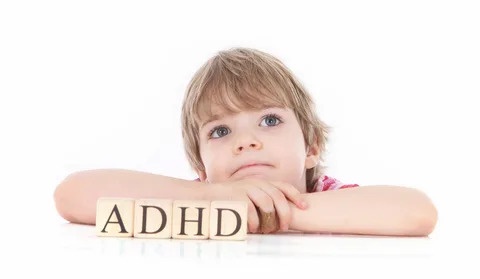All ages can be affected by Attention Deficit Hyperactivity Disorder (ADHD), a neurodevelopmental condition that can last a lifetime. Even though ADHD drugs are frequently used to address symptoms, the course of treatment may differ based on the patient's developmental stage. This post will discuss how ADHD medications are adapted for various life stages, including childhood, adolescence, adulthood, and elder age.
Childhood: Laying the Groundwork
Early Diagnosis and Intervention:
Children with ADHD are frequently diagnosed with the disorder when their symptoms first appear in preschool or the early school years. In order to minimize the effects of ADHD on academic, social, and emotional development, early diagnosis and intervention are essential. Children with moderate to severe symptoms that severely impair functioning may benefit from medication as part of a comprehensive treatment approach.
First-line treatment for ADHD in children is the use of stimulant medications, such as methylphenidate and amphetamine-based pharmaceuticals. They are quite good at enhancing focus, attention, and impulse control, all of which can help with behavior and academic achievement. Depending on each patient's response and tolerance, medical professionals may begin with a low dose and titrate it up.
Non-Stimulant Options:
Children who are unable to handle stimulants or who do not find them beneficial may occasionally be administered non-stimulant drugs such atomoxetine, guanfacine, or clonidine. These drugs might be especially beneficial for kids who have co-occurring disorders like anxiety or tics.
Behavioral Interventions:
Social skills instruction, classroom modifications, parent education, and other behavioral interventions are crucial in helping children with ADHD symptoms be managed in addition to medication. These interventions support children's self-regulation, organizing abilities, and coping mechanisms.
Adolescence: Shift and Adaptation
Medication Continued:
As kids reach puberty, the way ADHD medication is administered may also change to meet their evolving requirements and preferences. As they deal with the difficulties of middle and high school, such as rising scholastic obligations, extracurricular activities, and social pressures, many teenagers still find that medicine is helpful.
Independence and Adherence:
Adolescents may experience particular difficulties with independence and adherence to their medications. In order to promote medication adherence, healthcare clinicians should collaborate with adolescents and their families to establish strategies that include self-management skills development, medication reminders, and addressing barriers to adherence.
Extended-release stimulants and once-daily non-stimulants are two examples of long-acting formulations of ADHD drugs that may be especially useful for teenagers with hectic schedules or trouble remembering to take their medication on many occasions a day.
Monitoring for Side Effects:
Teenagers may be more vulnerable to mood or hunger swings, sleep issues, or changes in their growth trajectory when taking ADHD drugs. Healthcare professionals must regularly examine patients in order to detect any possible side effects and modify the prescription schedule as needed.
Managing Work and Relationships as an Adult
Continuation of Treatment:
Since ADHD symptoms can linger and affect relationships, employment, and general functioning, many people with the disorder benefit from medication well into adulthood. Medication for adults with ADHD may help them focus more clearly, be more productive, and regulate their impulses, which will help them handle their obligations and achieve their goals.
Medication Adjustment:
Depending on a person's response, symptoms, and circumstances, an adult's ADHD medication may need to be changed in terms of type and dosage. When choosing the best course of therapy, medical professionals may take into account variables such comorbid diseases, medication tolerance, and lifestyle preferences.
Combination Therapy:
To effectively control ADHD symptoms in adults, a combination of behavioral therapy and medication may be required in some circumstances. Adults who receive behavioral therapy, such as coaching or cognitive-behavioral therapy (CBT), can enhance their time management abilities, create coping mechanisms, and deal with particular ADHD-related issues.
Handling Comorbidities:
Anxiety, depression, and drug abuse disorders are common comorbidities among adults with ADHD. Treating comorbidities can enhance overall treatment outcomes, therefore healthcare practitioners should thoroughly screen for these diseases and plan treatment accordingly.
Older Age: Things to Think About for Adult Aging
Continuity of Care:
As people get older, their health state, tolerance to medications, and treatment requirements may vary. For older persons with ADHD, continuity of care is crucial to maintaining ongoing monitoring, modifying drug regimens, and coordinating care with other medical professionals.
Keeping an Eye Out for Cognitive Decline:
Seniors with ADHD may be more susceptible to dementia and cognitive decline. Healthcare professionals should be on the lookout for indicators of cognitive decline in this population and take into account the potential effects of ADHD drugs on cognitive performance.
Examining Drug Regimens:
Because aging affects metabolism and organ function, older persons may be more vulnerable to drug interactions and negative effects from medications. In order to reduce hazards and maintain symptom control, healthcare professionals should periodically examine prescription regimens and take adjustments into consideration.
Including Lifestyle Changes:
For older persons with ADHD, lifestyle changes including consistent exercise, a good diet, stress reduction methods, and cognitive training may be an additional part of their prescription treatment. These therapies have the potential to enhance quality of life, cognitive function, and general well-being.
In summary
Throughout the lifespan, ADHD medication is an essential part of treatment; however, the strategy for managing the medication may change based on the patient's developmental stage. Healthcare professionals can maximize treatment outcomes and enhance overall quality of life by customizing therapy to meet the specific requirements and preferences of children, adolescents, adults, and older persons with ADHD. The long-term safety and efficacy of ADHD medication depend on continuity of care, routine monitoring, and cooperation between patients, families, and healthcare professionals.


No comments yet